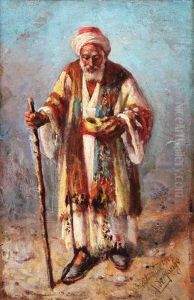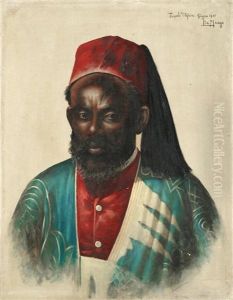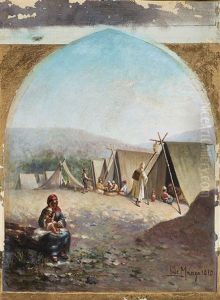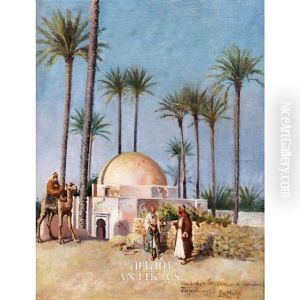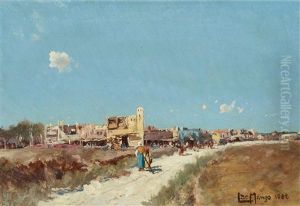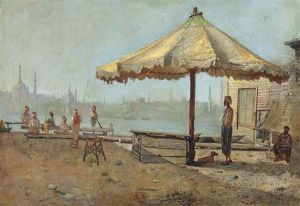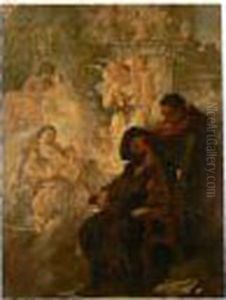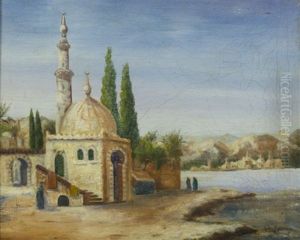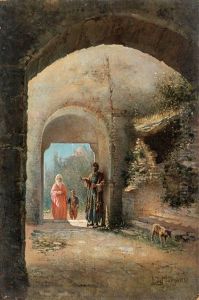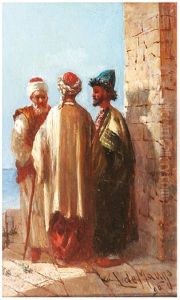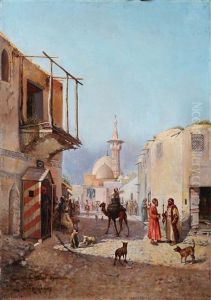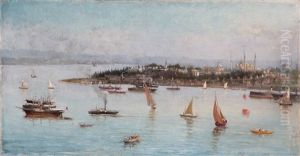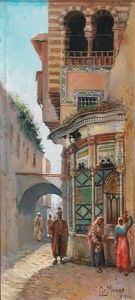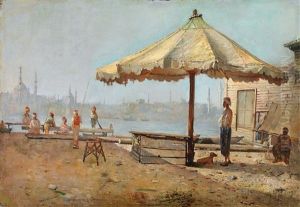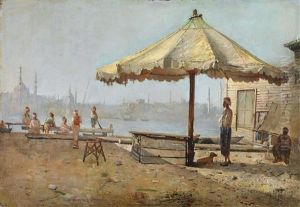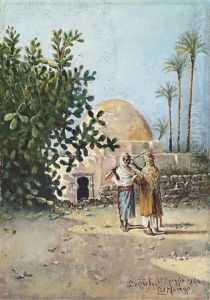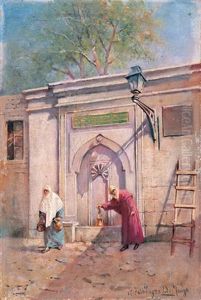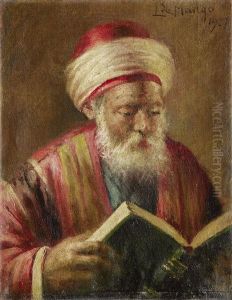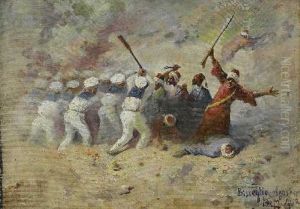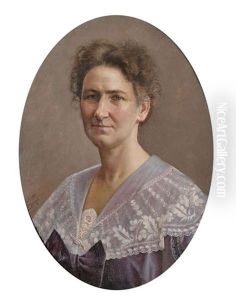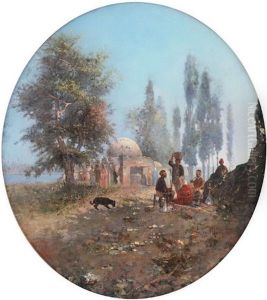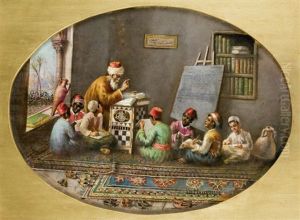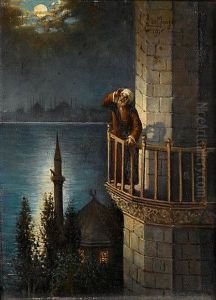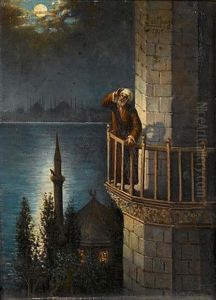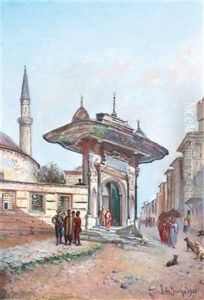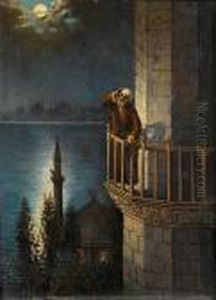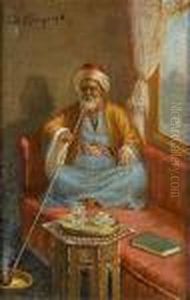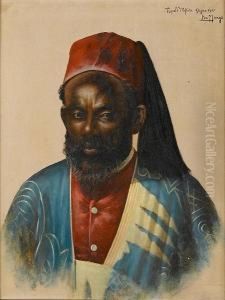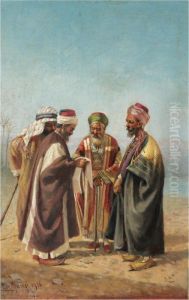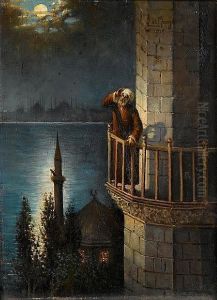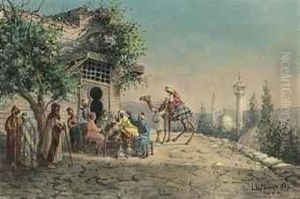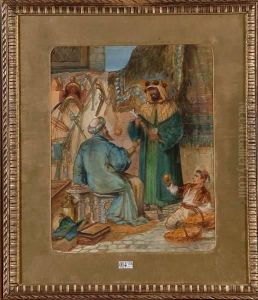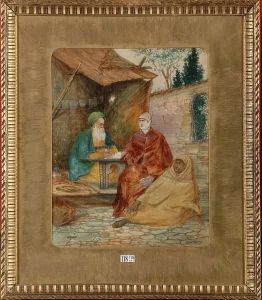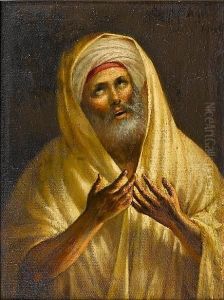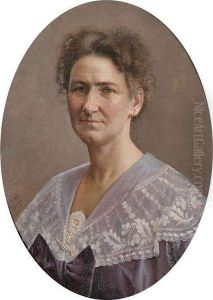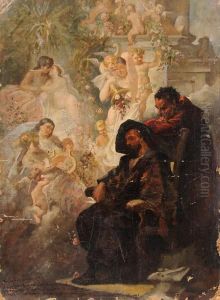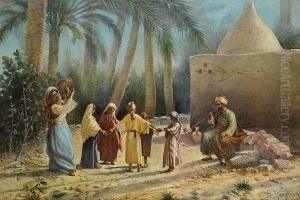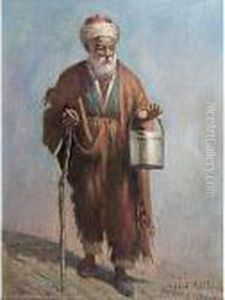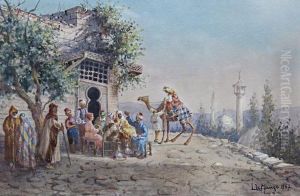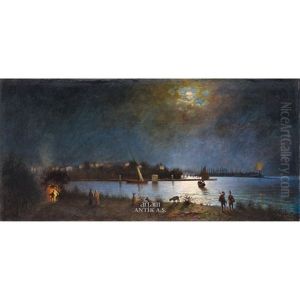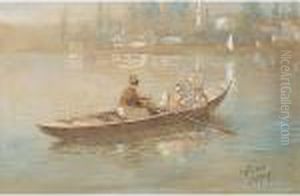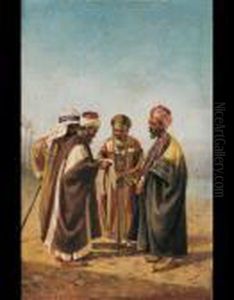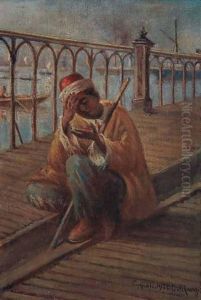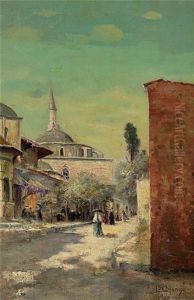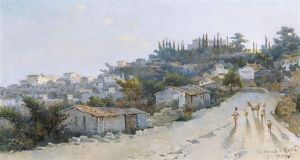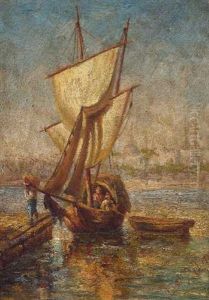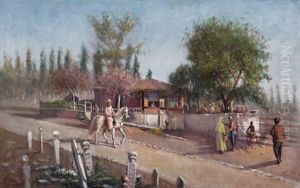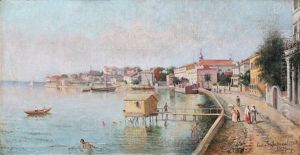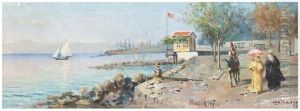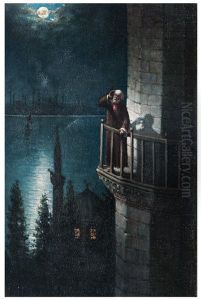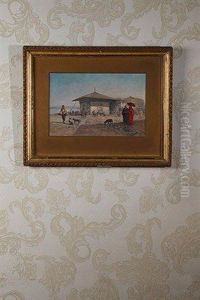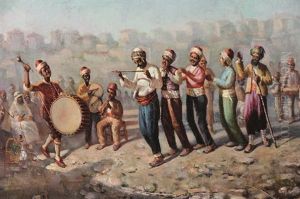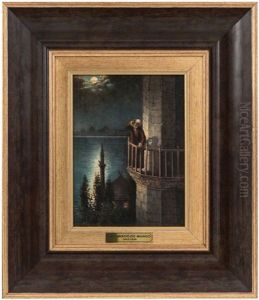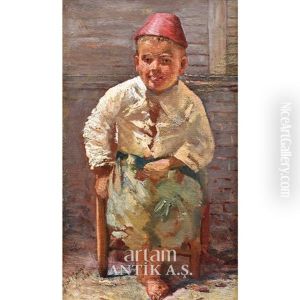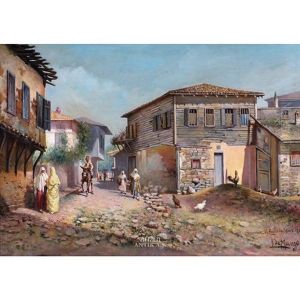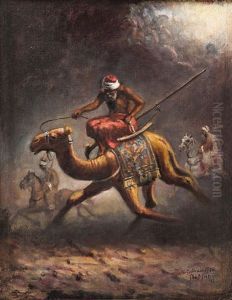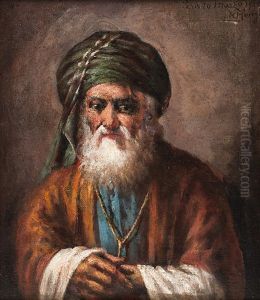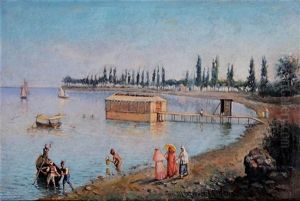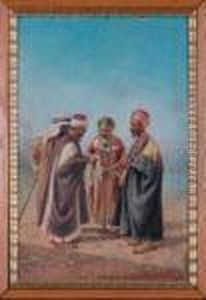Leonardo De Mango Paintings
Leonardo De Mango was an Italian painter known for his Orientalist works, depicting scenes from the Ottoman Empire, especially those showcasing the life and culture of Istanbul and its surroundings. Born in 1843 in Cerignola, a town in the province of Foggia, in the region of Apulia, Italy, De Mango developed a deep interest in the arts from a young age. He studied at the Naples Academy of Fine Arts, where he honed his skills and technique under the guidance of established artists of the time.
After completing his studies, De Mango traveled extensively throughout the Ottoman Empire, where he became fascinated by the exotic landscapes, historical architecture, and vibrant street life. This experience had a profound influence on his artistic career, and he began to specialize in Orientalist painting, a genre popular among European artists in the 19th century, which focused on depicting the Middle East, North Africa, and Asia.
De Mango settled in Istanbul and made the city his home for many years. His paintings often featured the Bosphorus, the mosques, markets, and everyday scenes of the people living there. He captured the light, colors, and textures of the region with a romantic and idealized perspective that appealed to the European audience's fascination with the 'Orient.'
During his time in Istanbul, De Mango became a prominent figure in the local art scene. He taught at various art schools and influenced a generation of Turkish artists. Despite living abroad, he maintained ties with Italy and participated in exhibitions and artistic circles back home.
Leonardo De Mango's works were widely exhibited and collected during his lifetime. His paintings are characterized by their detailed brushwork, vivid color palette, and the skillful rendering of light and shadow. Today, his works can be found in private collections and museums, and he is remembered as one of the notable contributors to the Orientalist movement.
De Mango continued to work and paint until his later years, passing away in 1930. His legacy as an artist who bridged cultures through his art endures, providing a window into the Ottoman world as seen through the eyes of a European artist in the late 19th and early 20th centuries.
